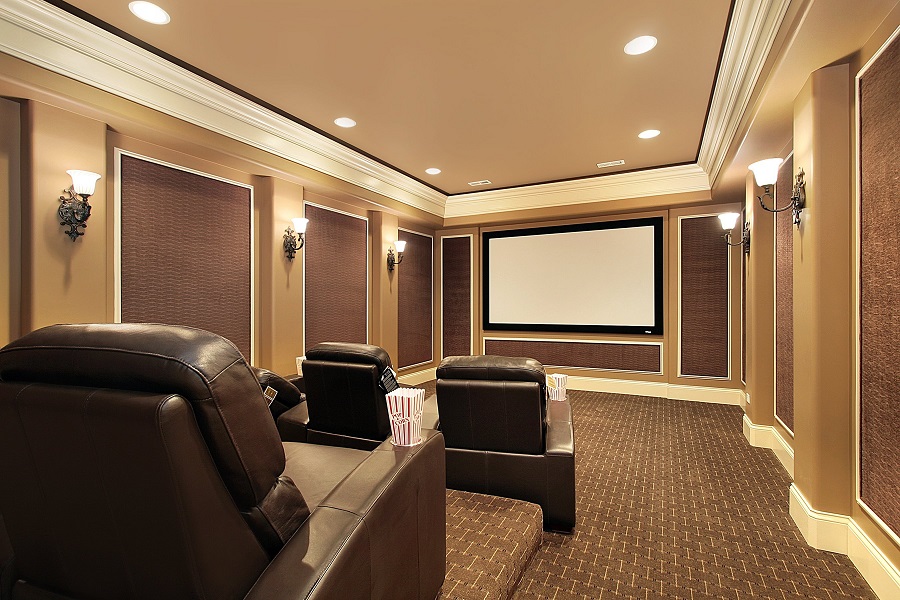How to Avoid These Common Home Theater Design Mistakes
Here Are 4 Ways to Improve Quality and Enhance the Overall Theater Experience

You’ve decided to start a home theater project. You’re ready to take your home to the next level.
Before you even think about construction, though, you should consider how you want your home theater to look – and operate.
Would you buy a car without researching any amenities or drawbacks it might have? Of course not. The same goes for home theaters.
One of the best ways to ensure an ideal home theater design within your First Coast residence – whether you’re in Ponte Vedra Beach, Jacksonville or St. Augustine, Florida – is to know the best practices.
Keep reading to find out some of the most common home theater design mistakes and how you can avoid them.
1. Neglecting the Importance of Seating
Have you ever sat at the end of a couch and noticed the intense glare on the TV screen? Why bring that to your home theater?
Before you think about which cool electronics or high-end sound system you want in your home theater, you need to think about seating options.
Far too often, people neglect the importance of a comprehensive seating design within a home theater and instead just place seats in the arrangement of a traditional commercial theater – without considering how that placement will affect the sound and visual quality within their own, unique rooms.
Instead, build your home theater around your seating design. Give everyone a clear view of the screen and provide you and your guests with a true surround-sound experience.
2. Choosing the Wrong Screen
You’ve likely experienced this yourself or noticed it happen before – you arrive at a movie 15 minutes late and are forced to sit in a front-row seat. You crane your head up to see the screen, and by the end of the movie, your neck is stiff.
Why bring that same experience to your home theater?
One common home theater design mistake is that people don’t consider their seating arrangement when deciding the size of their TV or projector screen.
Here’s an easy tip: The wider the screen, the further back people will need to sit to view all of the action. A bigger screen doesn’t necessarily mean a better viewing experience for your home theater. Image quality is what truly matters.
3. Placing Speakers in Poor Locations
There’s more to a great surround-sound system than simply placing some speakers in the front of the room and others in the back. Why suffer muffled or uneven sound in your home theater?
Consider placing speakers in an arrangement that complements your seating – so that everyone in your home theater can have an ideal listening experience.
We recommend a Dolby Atmos layout for home theaters: two front speakers on either side of a screen, two speakers at the back of the room, two in-ceiling or overhead speakers and a final, central speaker.
4. Forgetting a Control System
Your home theater is likely to have plenty of components – between lighting controls, audio equipment, video systems and more.
You don’t need to bother with several remotes to control each part of your home theater.
Instead, you can integrate each component of your custom theater onto one control system. We recommend Control4, from which you can manage all of your separate devices through an easy-to-use interface – whether on a touch-screen panel or smartphone/tablet application.
Control4 also allows you to merge your devices onto specific “scene” settings – so that when you press “Movie”, lights will dim and your audio/video systems will activate instantaneously.
Want more tips on how to build a successful home theater in Ponte Vedra Beach, FL, or beyond? We have plenty additional expertise we can provide you with.
Reach out to us either by calling (904) 257-4295 or by clicking on the contact us button at the bottom of your screen.


